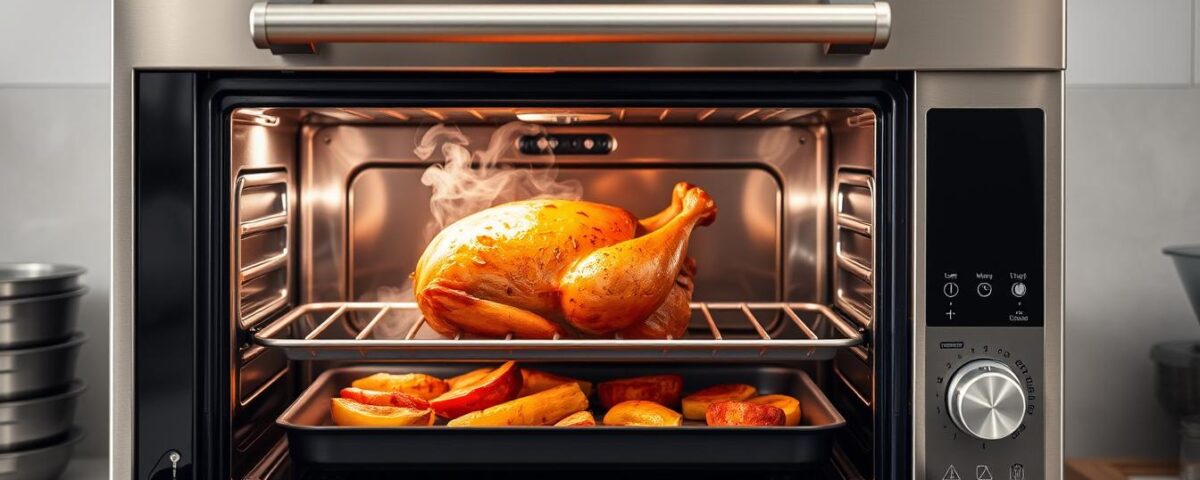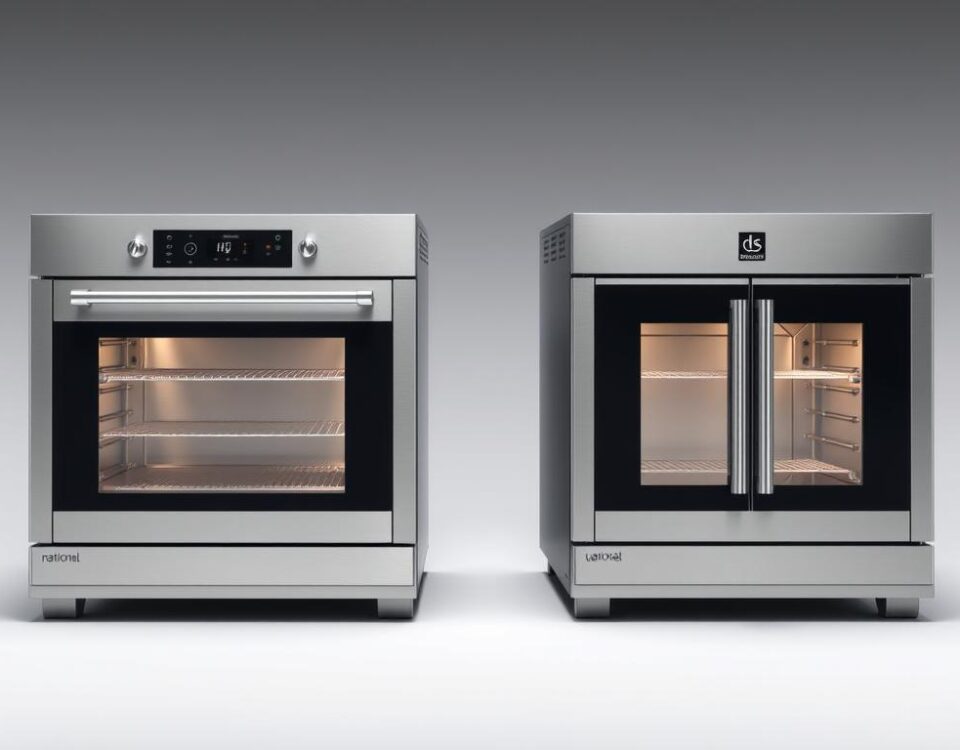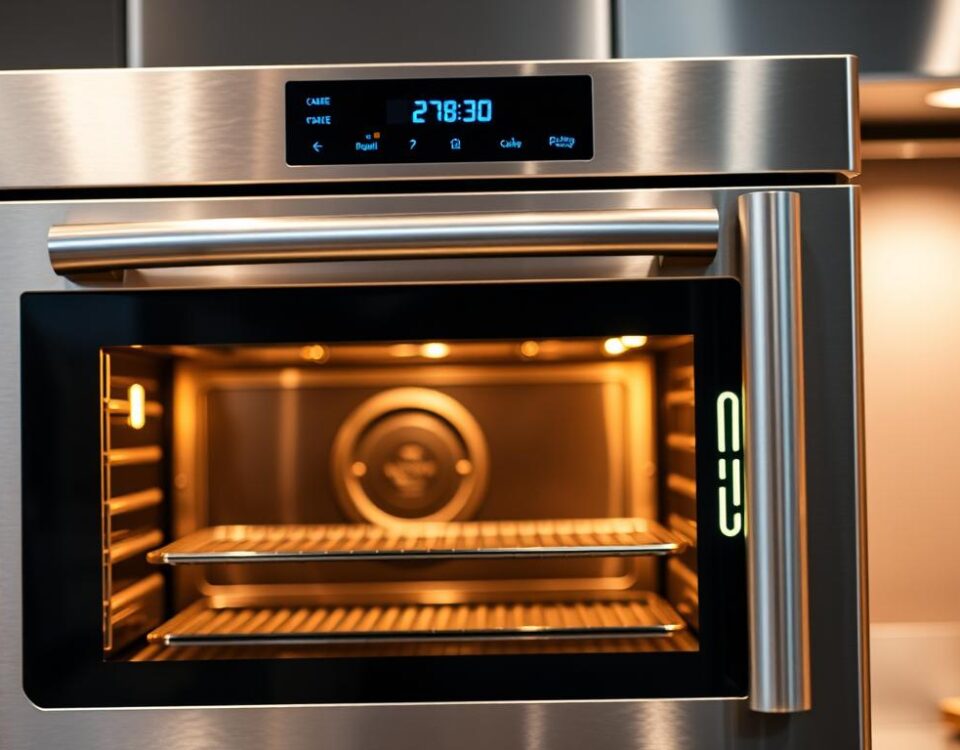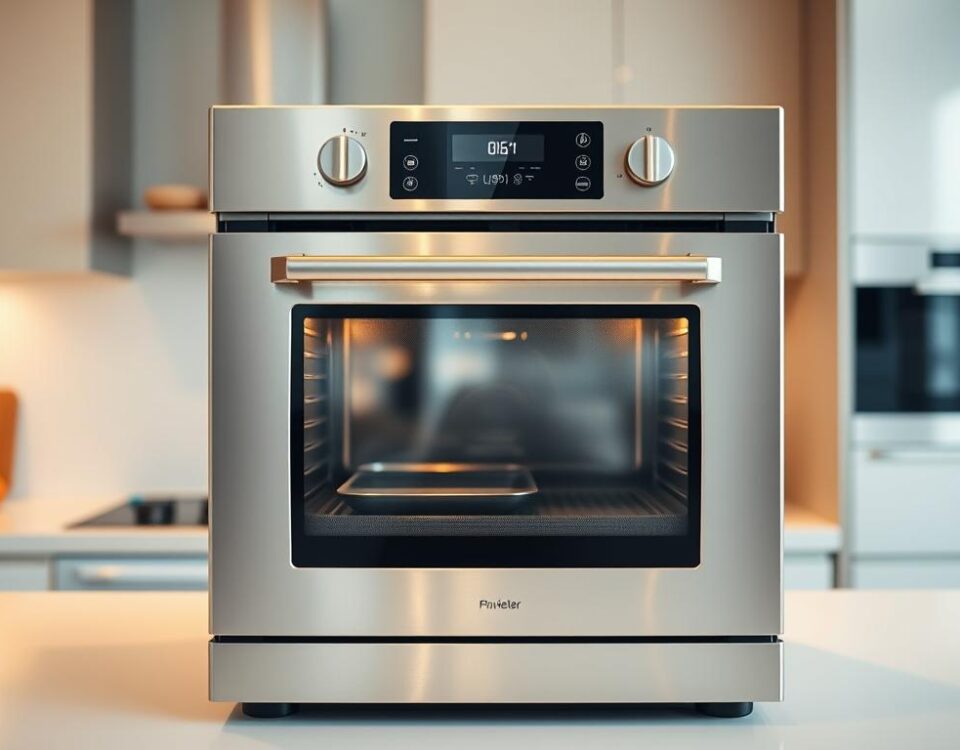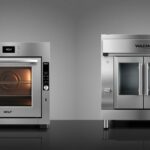
Wolf vs Vulcan: Which Convection Oven Bakes More Evenly?
September 23, 2025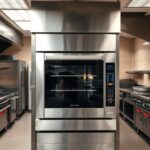
Combi Oven Costs: Electric vs Gas—What’s More Profitable in 2025?
September 24, 2025I still remember the frustration I felt when I first started using my convection oven. I was experimenting with a new recipe, but my dish turned out overcooked on the outside and undercooked on the inside. It wasn’t until later that I discovered I was making a common mistake that many home cooks make when transitioning to convection cooking.
Did you know that convection ovens can cook food up to 25% faster than traditional ovens? This is because they use a fan to circulate hot air, ensuring a more uniform temperature throughout the oven. However, this also means that cooking times and techniques need to be adjusted.
As I learned to adapt my cooking techniques, I realized that understanding the differences between conventional and convection ovens is crucial for achieving the best results. In this article, I’ll share the four most common mistakes people make when making the switch and how to avoid them.
Key Takeaways
- Understand the differences between conventional and convection ovens to achieve better cooking results.
- Adjust cooking times and techniques to accommodate the faster cooking speed of convection ovens.
- Learn how to use the convection oven’s features to your advantage.
- Avoid common mistakes that can lead to overcooking or undercooking.
- Master the art of convection cooking to achieve more even and efficient cooking.
Understanding the Difference Between Conventional and Convection Ovens
The primary distinction between conventional and convection ovens lies in their cooking mechanisms. Conventional ovens cook food by enclosing it in hot, dry air, which gradually conducts heat inward until the food is uniformly cooked.
In contrast, convection ovens feature a fan and an exhaust system that circulates hot air around the food, providing a more uniform and speedy cooking environment. This circulation of hot air eliminates hot spots, ensuring even cooking throughout.
How Convection Ovens Work
Convection ovens work by using a fan to distribute heat evenly throughout the cooking chamber. The fan circulates hot air around the food, accelerating the cooking process. This results in faster cooking times, typically 25% faster than conventional ovens.
Benefits of Cooking with Convection
Cooking with convection offers several benefits, including faster cooking times, more even results, and better browning capabilities. The circulating air in convection ovens creates a “wind chill effect” that accelerates cooking by continuously replacing the cooler air surrounding the food with fresh hot air. This makes convection ideal for roasting meats and vegetables, baking cookies, and creating crispy exteriors on various foods.
Common Switching to Convection Oven Mistakes
Switching to a convection oven can be a game-changer in the kitchen, but it requires some adjustments to avoid common mistakes. When making the switch, understanding the nuances of convection cooking is crucial for achieving the best results.
Not Adjusting Temperature Settings
One of the most common mistakes is not adjusting the temperature settings when switching from a conventional to a convection oven. Because convection ovens circulate air more effectively, they cook food faster and at a higher temperature. It’s often suggested to reduce the temperature by 25 degrees when using a convection oven. This adjustment helps prevent overcooking and ensures that your dishes are cooked evenly.
Ignoring Cooking Time Differences
Failing to adjust cooking times is another mistake that can lead to disappointing results. Convection ovens cook approximately 25% faster than conventional ovens. If you follow conventional recipe times, you risk ending up with overcooked or burnt food. Keeping an eye on the cooking time and checking for doneness a little earlier than the recipe suggests can make a big difference.
Using Inappropriate Bakeware
The type of bakeware you use can significantly impact your convection cooking results. Deep pans or dishes with high sides can block air circulation, compromising the browning process and potentially leading to unevenly cooked food. Opting for shallow pans and baking sheets can help ensure that air circulates freely around your food.
| Mistake | Consequence | Solution |
|---|---|---|
| Not adjusting temperature | Overcooking or uneven cooking | Reduce temperature by 25°F |
| Ignoring cooking time differences | Overcooked or burnt food | Check for doneness earlier |
| Using deep pans | Blocked air circulation, uneven cooking | Use shallow pans for better air circulation |
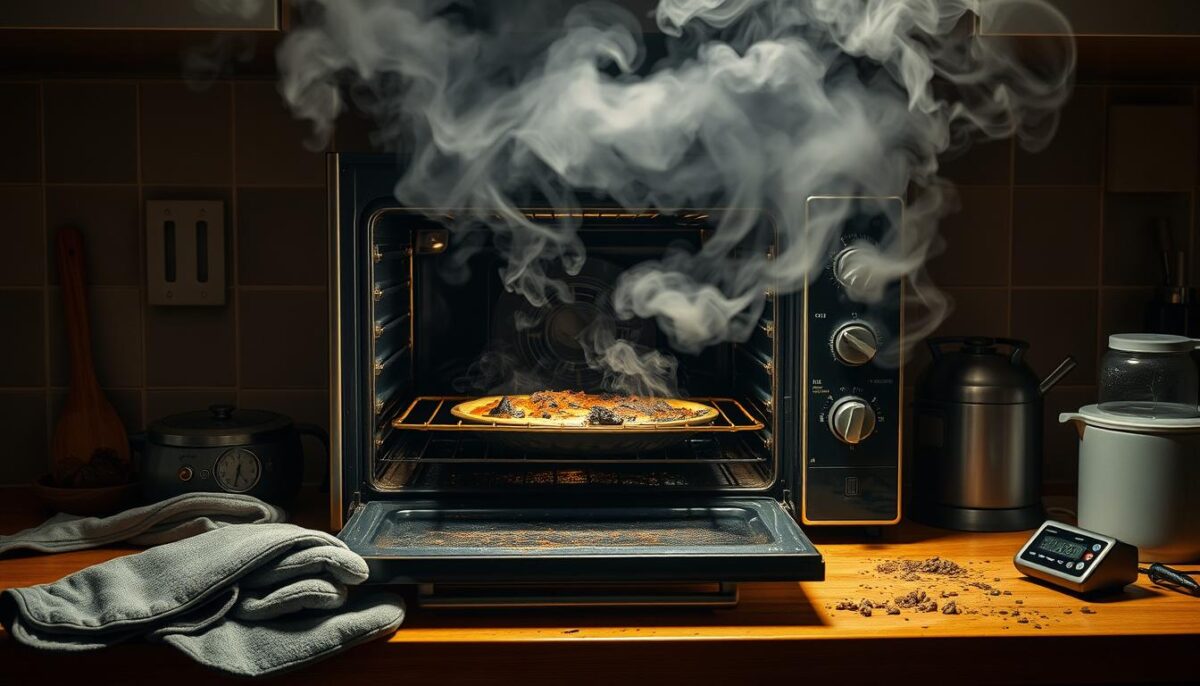
How to Properly Adjust Recipes for Convection Cooking
One of the keys to successful convection cooking lies in properly adjusting your recipes. When switching from conventional to convection ovens, it’s crucial to understand that the cooking process changes, and so should your recipes.
The 25-Degree Rule for Temperature
Lowering the oven temperature by 25°F is a simple yet effective rule for adjusting recipes to convection cooking. This adjustment compensates for the increased efficiency of convection cooking, ensuring that your dishes are cooked as intended. By reducing the temperature, you can prevent overcooking and promote even browning.
Reducing Cooking Times by 25%
If you prefer to cook your food faster, you can reduce the cooking time by about 25% when using a convection oven. This approach is ideal for achieving the same level of doneness in less time. However, keep in mind that convection ovens can brown food quickly on the outside, so it’s essential to check for doneness.
Testing for Doneness
Regardless of the method you choose, testing for doneness is crucial in convection cooking. Use a meat thermometer for proteins, and perform toothpick tests for baked goods. This ensures that your food is cooked through, even if it appears done on the outside.
By applying these adjustments and testing methods, you can enjoy perfectly cooked meals with your convection oven. Whether you’re baking, roasting, or cooking a variety of dishes, convection cooking offers versatility and efficiency in the kitchen.
When to Use (and Not Use) Your Convection Setting
Understanding when to use the convection setting is key to unlocking its full potential. The convection setting on your oven can be a game-changer for many types of dishes, but it’s not always the best choice.
Perfect Foods for Convection Cooking
Certain foods are ideal for convection cooking. Roasted meats and vegetables are great examples because the circulating air allows for more caramelization and even browning. Michael Zentner, chef at The Drifter in Charleston, SC, recommends using convection for pies, cookies, bacon, biscuits, and puff pastries. These foods benefit from the even temperatures and browning that convection cooking provides.
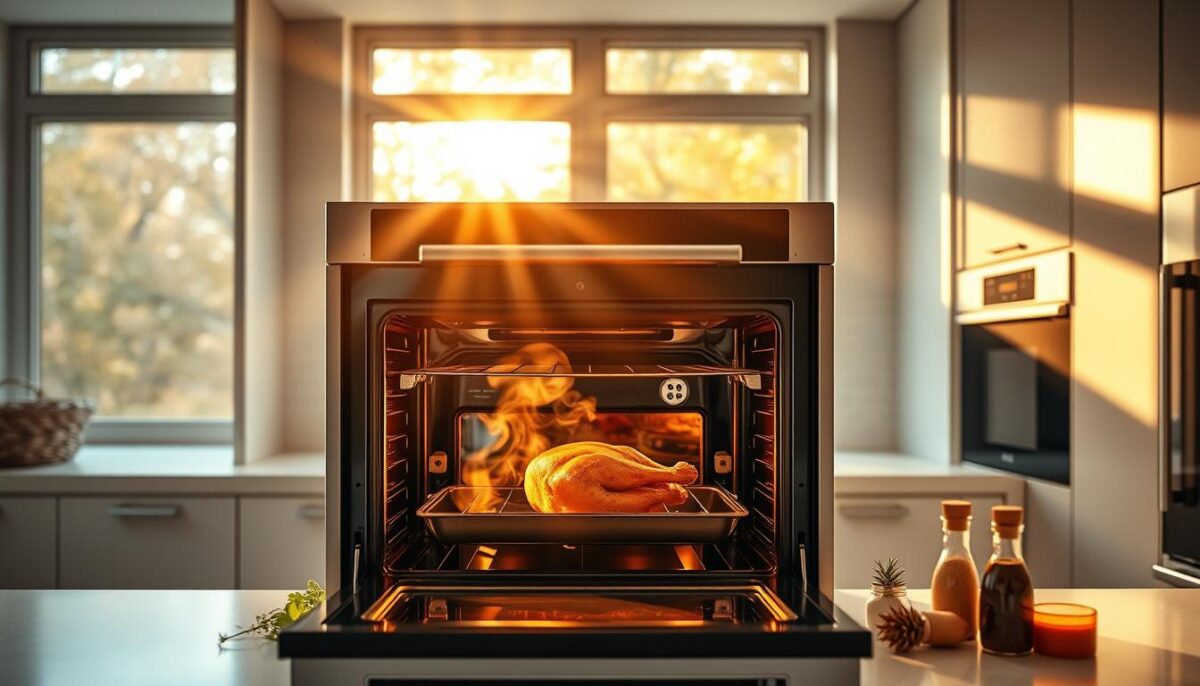
Convection cooking excels with foods that benefit from browning and crisping. The fan in a convection oven circulates hot air around the food, resulting in a crispy exterior and a tender interior. This makes it perfect for roasted meats like chicken and beef, as well as for vegetables like Brussels sprouts and carrots.
Foods That Prefer Conventional Heat
While convection cooking is versatile, there are some dishes that are better suited to conventional heat. Delicate cakes, soufflés, custards, and quick breads can be negatively affected by the fan’s air movement. For instance, cakes and breads can become too dry or unevenly cooked when exposed to the circulating air of a convection oven.
Professional chefs like Carter recommend using conventional ovens for braising meats, such as short ribs, or making duck or rabbit confit, where low and slow cooking is required. This highlights the importance of understanding when to use convection versus conventional settings to achieve the best results.
Conclusion: Making the Most of Your Convection Oven
Mastering your convection oven can elevate your cooking to new heights. To achieve this, it’s crucial to understand the nuances of convection cooking and how it differs from traditional cooking methods.
When using a convection oven, remember to adjust your recipes accordingly. Reduce the temperature by 25°F or cooking time by 25% to achieve optimal results. Choosing the right bakeware is also essential; opt for rimmed baking sheets or dishes with low sides to facilitate air circulation.
Some final tips for getting the most out of your convection oven include not overcrowding the oven, positioning racks properly, and experimenting with different recipes to find the perfect adjustments. By doing so, you’ll be able to save time, reduce energy usage, and produce more consistent results.
Embracing your convection oven as a valuable kitchen tool can transform your home cooking. With practice and patience, you’ll be able to unlock its full potential and take your cooking to the next level.
FAQ
What is the main difference between convection and conventional ovens?
The primary difference lies in how they circulate air. Convection ovens use a fan to circulate hot air around the food, promoting even cooking and browning, whereas conventional ovens rely on natural heat rise.
Do I need to adjust the temperature when using my convection oven?
Yes, it’s often recommended to reduce the temperature by 25 degrees Fahrenheit when using the convection setting to prevent overcooking and promote even browning.
How do I know when to use the convection setting?
The convection setting is ideal for cooking methods that benefit from air circulation, such as roasting vegetables, baking cookies, or cooking certain types of meats. However, delicate dishes like custards or certain cakes may not be suitable.
Will my cooking time be different with a convection oven?
Yes, cooking times are often shorter in convection ovens due to the efficient air circulation. It’s a good practice to check for doneness earlier than the recipe suggests and to reduce cooking times by about 25%.
Can I use any bakeware in my convection oven?
While many types of bakeware can be used, it’s best to avoid using pans that are too deep or too narrow, as they can obstruct air circulation. Opt for pans that allow air to circulate freely around the food.
Are there specific foods that benefit more from convection cooking?
Yes, foods like roasted vegetables, baked potatoes, and certain meats (like chicken or turkey) benefit greatly from convection cooking due to the even browning and crisping it provides.
